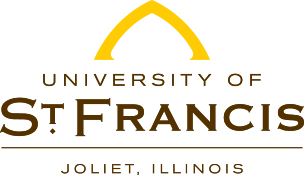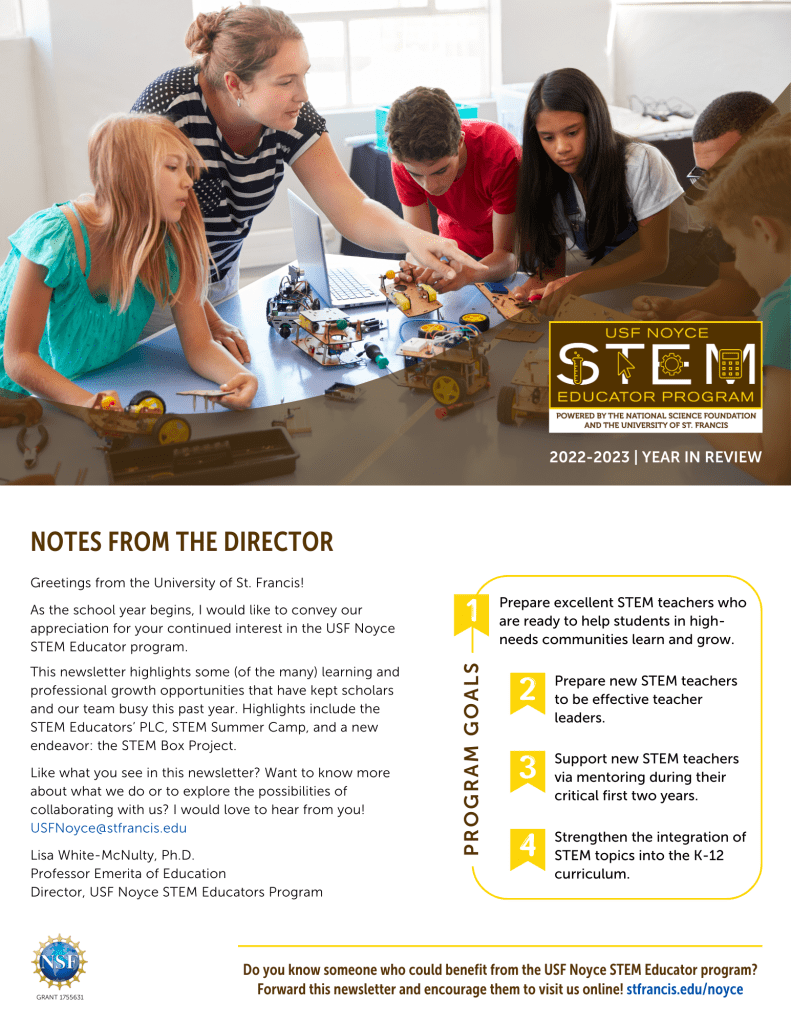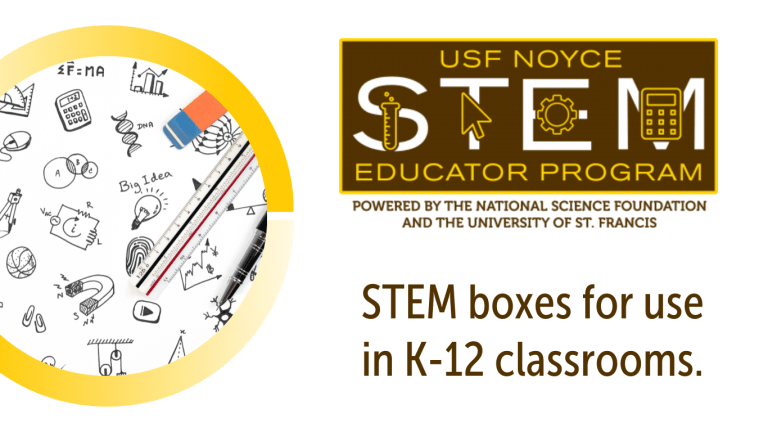
STEM Boxes for K-12 Classrooms
The Noyce STEM Educator Program provides scholarships for qualifying students who major in Biology or Mathematics with Secondary Licensure at USF. Grant funding for the Noyce program is ending, so applications are no longer being accepted. However, read on to learn more about what our current USF Noyce Scholars are doing!
The Noyce program is developing STEM boxes for use in K-12 classrooms. The boxes include materials and standards-aligned lesson plans that integrate STEM topics in math and science curricula. Each box…
- contains lesson plans for multiple grade levels (elementary, middle and/or high school).
- can be checked out of the USF library for 3 weeks.
The lesson plans and materials are free to use. There are boxes on Layers of the Earth, Chemistry of Shrinky-Dinks, and Robotics available for checkout now. More boxes are coming soon.
To learn more about the USF STEM box library, click here. There is a Welcome Document with information about how to use the resources and an index to the lessons and materials within each box. Any questions should be directed to usfstemboxlibrary@gmail.com
STEM Summer Camp
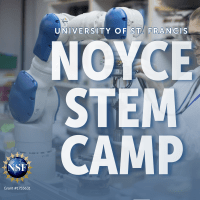
June 10-14, 2024
9 a.m.-1 p.m.
Location: University of St. Francis
Ages: Rising 6th-9th Graders
Theme: Robotics
Join USF Noyce Scholars and local middle school teachers for a free STEM summer camp experience for students in 6th-9th grades! We will use problem-based learning to tackle local issues. Come learn science and mathematical problem-solving approaches for STEM topics–and win daily door prizes!
Click here to register or contact Chloe Lash at clash@stfrancis.edu with questions.
Noyce Scholar News & Resources
- Scholar Year in Review Newsletter 2022-23
- Scholar Escape Rooms | Digital Breakouts
- Integrated STEM Units by USF Noyce Scholars
Free open-educational resources for Math and Science teachers created by USF Noyce Scholars. See folders below.
By Ashley Hatz, USF Noyce Scholar
Module 1 Linear Equations: This Module helps students to explore the process of solving linear equations. Students will make observations and measurements to identify materials based on their properties. They will also develop models to generate data and use technology to seek feedback while completing different activities that guide them through the process of solving linear equations. Students will complete various activities from watching Youtube videos to completing Google Docs and FlipGrids explaining their rationale.
Module 2 Solving Systems of Equations: This Module helps students to explore the process of solving systems of equations. Students will use mathematical representations to support the claim that atoms, and therefore mass, are conserved during a chemical reaction to make connections to solving systems of equations. Students will complete various activities from watching Youtube videos to completing Google Docs and FlipGrids explaining their rationale. Students will also read articles to analyze applications of solving systems of equations.
Module 3 Solving Quadratic Equations: This Module helps students to explore the process of solving quadratic equations. Students will use mathematical modeling and reasoning to make connections to solving systems of equations. Students will complete various activities from watching Youtube videos to completing Google Docs and FlipGrids explaining their rationale. Students will also read articles to analyze applications of solving systems of equations and follow along with Khan Academy and Emaze presentations.
Three modules covering Solving Linear Equations, Systems of Equations, and Solving Quadratic Equations. All three units can be accessed here.
By Lissett Leija, USF Noyce Scholar
Module 1 Systems of Equations: This module helps students to explore the different methods of solving systems. It includes solving systems by graphing, elimination, substitution and matrices. The module also integrates the use of technology by introducing the online graphing software Geogebra. Students will be able to explore the software through a Geogebra webquest as well as an assessment. The assessment will test the students ability on their understanding of the different methods and allow them to create connections to the specific content and real word applications.
Module 2 Solving Equations: This module consists of lessons that involve solving equations. The lessons allow students to be able to build and manipulate equations to reach common answers. The module also provides a sneak peek into Physics allowing students to apply their understanding behind rearranging and solving their equations. Lessons include openers where students build upon their background knowledge and closures to have a formative assessment on each of the lessons. Included in the module is a interactive Jeopardy review games where students can be grouped together to gain the most points!
The two modules contain lessons on Solving Systems of Equations and Solving Equations. Each module contains days of instruction as well as homework problems. The first module contains a Geogebra assessment and the second includes a Jeopardy game. Both units can be accessed here.
By Bobbi Herrera, USF Noyce Scholar
Evolution: students will learn about descent with modification, evidence for evolution, and natural selection.
How Organisms Grow & Develop: students will learn about the cell cycle, structure of DNA, DNA replication, and mitosis.
Gene Expression: students will learn how our DNA encodes for our characteristics, specifically through the steps of transcription and translation.
By Lizbeth Perez, USF Noyce Scholar
Module 1 Surface Area, Volume, and Density: Students review and learn surface area, volume, and density over three days. The remaining two days will be used for the students to explore the topics with hands-on material.
Module 2 Slope and Technology: Students review and learn points/lines, slope formula, slope-intercept form, and standard form. over four days. Day five will be an accumulation of everything learned where students will use GeoGebra, an assistive technology tool, to graph linear models they create and will represent the linear model in both slope-intercept and standard form.
By Seth Diaz, USF Noyce Scholar
Module 1 Newton’s Second Law: The first module focuses on HS-PS2 1: Analyze data to support the claim that Newton’s second law of motion describes the mathematical relationship among the net force on a macroscopic object, its mass, and its acceleration. This is done through a Lecture on Newton’s Laws of Motion, a Discovery Activity, a Lecture of Force Diagrams, and a Guided Inquiry Activity. The cumulation of these resources provide the students with opportunities to explore Newton’s Second Law of Motion and understand the mathematical relationships between Mass, Acceleration, and Force.
Module 2 Gravity and Coulonb’s Law: The second module utilizes HS-PS2 4: Use mathematical representations of Newton’s Law of Gravitation and Coulomb’s Law to describe and predict the gravitational and electrostatic forces between an object. The students will learn the material through Lectures, Discovery Activities, Guided Inquiry Activities, Technology Laboratories, and a Laboratory. The importance of being able to predict the forces between objects via Newton’s Law of Gravitation or Coulomb’s Law of Electrostatic Forces will be assessed through primarily technology based activities. This allows the students to explore these forces on the appropriate scales and provides an interactive activity for in the classroom or at home.
Module 3 Momentum: The third module focuses on HS-PS2 2: Use mathematical representations to support the claim that the total momentum of a system of objects is conserved where there is no net force on the system. The students will be provided with a Lecture, a Discovery Activity, a Technology Laboratory, and a Open or Guided Inquiry Activity. The Lecure, Discovery Activity, and Technology Laboratory are tools that provide the students with the skills to complete the Open or Guided Inquiry Activity. This Activity is a three day long assessment of Baseball and Softball to find out which sport is “harder” based in Physics terms. In the Activity the students will be able to use mathematical representations to explain the momentum of a no net force system.
Module 4 Motion, Gravity, and Momentum: The fourth and final module is a collimation of module one, three, and HS-PS2 3: Apply science and engineering ideas to design, evaluate, and refine a device that minimizes the force on a macroscopic object during a collision. The students are tasked with using their newly discovered physics skills to assess the quality of substances used in Crash Cushions that are used for safety on highways. This Open Inquiry Activity has the students design a ramp to test the speed of a moving object and the collision with four different materials. They are asked to figure out what material was best for the speed that they were going at. This Activity provides a variety of answers based on the angle of the ramp that they make. The fourth module wraps up this unit with a fun and interactive Activity that can either be done at home or at school.
Four modules covering Newton’s Laws of Motion. Units can be accessed here.
University of St. Francis Noyce STEM Educator Program at USFNoyce@stfrancis.edu
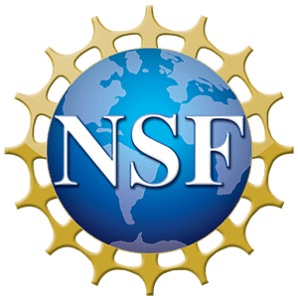 GRANT #1755631
GRANT #1755631
